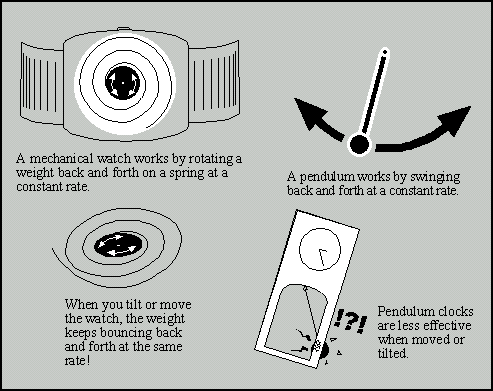

Greenwich,
England and Clocks that Travel…
In theory, you can use this method
to measure the difference in longitude between any two places on Earth. In practice
however, we always measure our longitude based on how far East or West we are
from Greenwich, England. Why is that?
Pendulum Clocks
don't travel well
It all has to do with watches and
clocks that travel well. If you want to use time to measure your longitude,
you need a clock that works while traveling. People have long built pendulum
clocks that are very accurate- unfortunately, they don’t travel well.
The pendulum swings wildly if you try to use it on a ship or train. Pendulum
clocks do best when they are very still.
In practical terms, people couldn’t measure their longitude while traveling until someone invented the travelling clock. When did this occur?

Harrison's Clock
Between 1730 and 1770, John Harrison,
a self-taught British inventor, worked to improve the accuracy of his 'sea watches'
so that they could stay accurate despite changes in temperature and the motion of a ship.
His designes used springs to rotate a weight back and forth at a steady rate. Moving the
clock didn’t affect this motion at all. We still build mechanical wrist
watches based on this principle.
Once Harrison invented his spring-based clock, everyone started using his designs to measure longitude. To keep things simple, everyone started measuring from the same place- Greenwich, England. Why there? At the time, Great Britain had the most powerful navy on Earth, with the most ships and with colonies all around the world. They also published a lot of maps. So everyone used the British Prime Meridian, in Greenwich, England.
Why Greenwich?
Why did the British base their Prime
Meridian in Greenwich? Greenwich is suburb of London, and is located right along
the Thames River. All of the big ships leaving London had to pass right by Greenwich
as they were leaving on their travels. Greenwich also houses the Royal Maritime
College, which has a very fine Solar Observatory up on a hill, overlooking the
Thames. Around mid-day, the scientists in the observatory measure the exact
moment that the Sun is overhead, and set their clocks to 12 Noon. At exactly
1pm, they would drop a large orange ball down a flag pole, in a ritual reminiscent
of the more recent New Year’s Eve Celebration in Times Square. Now every
ship captain could set their traveling clocks before setting out on their journeys
around the world.
Copyright
©2011 Martin Roberge. |